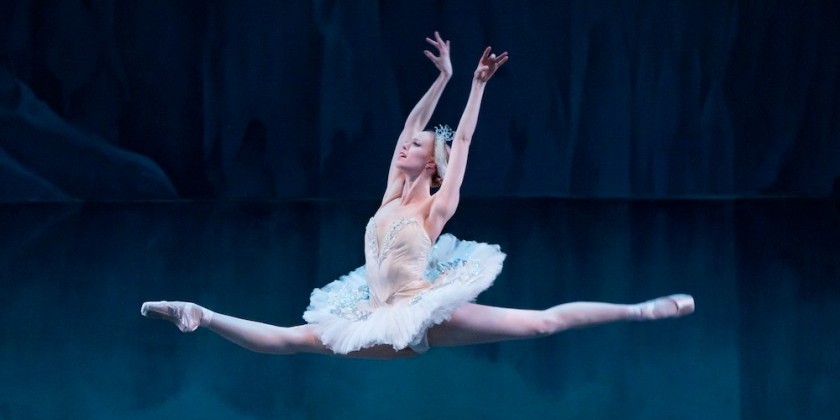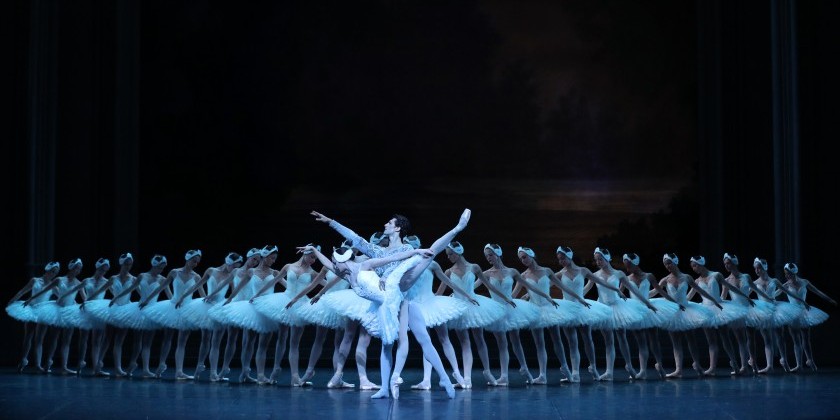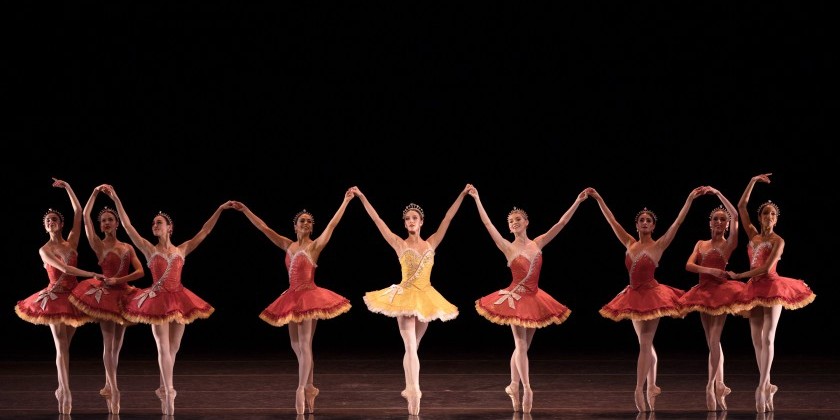Impressions of Andy de Groat & Catherine Galasso's "get dancing"
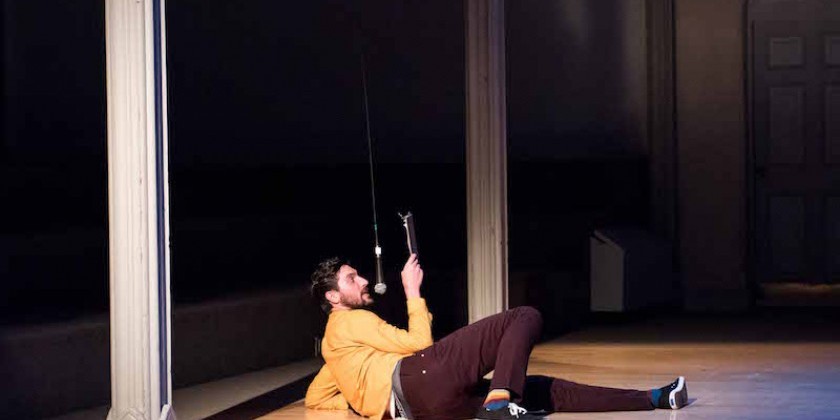
de Groat's Timeless Works Return to Danspace Project
Choreography by Andy de Groat and Catherine Galasso
Music by Michael Galasso and Talking Heads
Costumes by Karen Boyer / Lighting by Carol Mullins
Dancers: Christine Bonansea, Ritty Ann Burchfield, Frank Conversano, Charles Dennis, Chris DeVita, Catherine Galasso, Patrick Gallagher, Makram Hamdan, Meg Harper, Kirstin Kapustik, Kristopher K.Q. Pourzal, Kathryn Ray, Alex Romania, Sarah Sandoval, Austin Selden, Satya Celeste Stainton, Julia Vickers, Buck Wanner, Emily Wassyng, Meg Weeks, Madeline Wilcox
Choreographer Catherine Galasso created her recent program, get dancing, at Danspace Project in collaboration with choreographer Andy de Groat, an important figure in the downtown New York dance scene of the 1970s. De Groat’s impressive early works began to fade from the downtown dance memory in the 1980s after the dancemaker moved to France, where he still lives, directing his Paris based company, red notes. The 1970s pieces are now mostly unknown to dancegoers too young to have frequented the precincts of downtown dance 40 years ago. This is one reason Galasso embarked on a project to recreate some of them.
In a poignant irony, two of these “forgotten” works, fan dance and get wreck, premiered at this very venue, Danspace Project, in 1978. Galasso describes get dancing as “a study of aesthetic lineage that is part-tribute, part live-archive, part new work.” In spoken text during the program, she reveals that she relied for her reconstructions mainly on discussions with de Groat in Paris and via email; the film record (not available for all the works); and on the memories of original cast members. In one of many astute artistic decisions, she invited these original dancers — Ritty Ann Burchfield, Frank Conversano, Charles Dennis, and Kathryn Ray — to join her “project-specific” cast.
Galasso knew of de Groat’s work through her father, composer Michael Galasso (1949–2009). He and de Groat collaborated on several works, including Rope Dance Translations (1975), a filmed version of which opened this program. The figures in this grainy black-and-white film wear “capes” formed by a cat’s-cradle-like web of rope. They slowly spin in time with the slow arpeggios of Galasso’s violin score, manipulating the capes as they turn, so that the ropes, in the stark-lit stage set of the film, billow out like luminous nimbuses. As the dancers begin turning faster, the arpeggios of the score also speed up, so that the music, which initially reminded me of Bach, takes on a Minimalist sound.
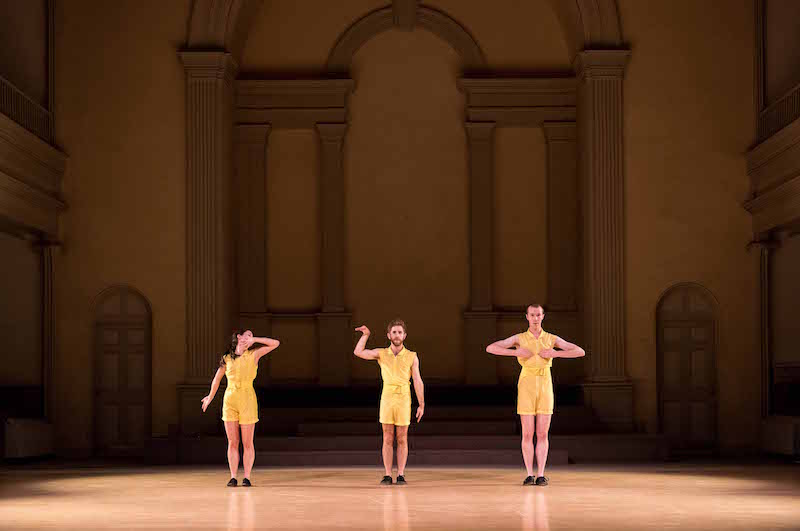
In Rope Dance, and in most of the works shown here, de Groat creates from a simple motif strikingly inventive variations, which accumulate to form arrestingly beautiful images. Rope Dance acquires an ethereal, almost hypnotic force as camera angles, performers, lighting, and arm movements change even as the spinning stays constant. The piece is postmodern in sensibility, aesthetic, and in its pedestrian movement vocabulary. But from a purely visual standpoint, it put me in mind of the late-19th-century American dancer (and choreographer) Loie Fuller, who took Paris by storm with solo dances — recorded in prints by Toulouse-Lautrec and in early short films — in which she manipulated an immense silk skirt that, under the colored luminescence of tinted gaslights, made an ethereal, almost magical impact.
Galasso amplifies the images on the 20-minute film by having four performers take turns spinning in tandem with the filmed dancers. Three of these are, in fact, also in the film. Frank Conversano, a noted choreographer, dancer, and fixture of the downtown dance scene, particularly stands out. As in his filmed performance 40 years earlier, he completes each revolution in just two soft pivoting steps as his head whips around with a sharp, focused spotting. These details give the spinning its ethereal quality: The gliding feet leave an impression of hovering, while the whipping force of the head and torso make possible the fullest trompe l’oeil effects of the rope capes.
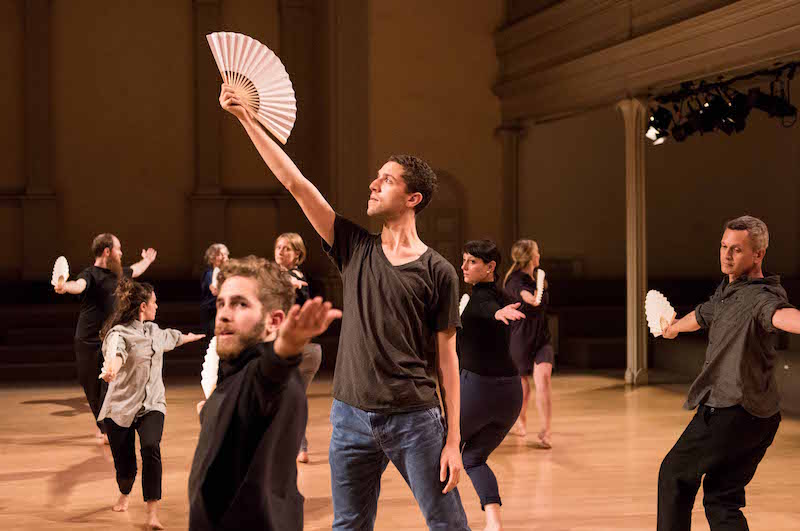
Conversano, by dint of the sheer beauty of his movements and his understated but potent charisma, also stands out in get wreck, a work for ten performers. Get wreck is worlds away from Rope Dance. Fast and nearly always chaotic, it struck me as the dance equivalent of a New York street scene. The performers, wearing street clothes, often move on individual trajectories, crossing, passing, running, walking, turning, jumping. Occasionally, they come together in fleeting mini-dramas among small subsets of dancers. Conversano, though now heavyset and at least 30 years older than some of the other performers, is the lightest dancer onstage, moving with a velvety softness, his compact arms beautifully controlled, his unusually large hands eloquent in elliptical, mysterious gestures.
Get wreck combines improvisation with structured movement. The work’s most evident structuring device derives from the rhythmic patter of a chorus of nine cast members reciting a poem by Christopher Knowles (Knowles himself was among them). Funny, often nonsensical, and always absurd, this “verse” was a worthy descendant of Gertrude Stein and e.e. cummings.
De Groat made fan dance in 1978, the same year as get wreck. It’s the more substantial work — marvelously timeless — and one I hope dance lovers will have a chance to see again. Michael Galasso composed the hauntingly melodious score. The basic motif for fan dance is simple: Four steps forward into a mini-lunge followed by eight steps back. From this movement phrase, de Groat, as in Rope Dance, creates marvelously inventive variations. And the effect is again startling beautiful. Catherine Galasso sets the work for 13 dancers, each of whom hold a white fan in one hand. The performers raise their arms high, bring the fans to their chests, hold them straight out from their shoulders. At times, the dancers’ lunges and arm movements evoke fencing (to my husband they evoke ultimate Frisbee). Throughout, the elaborate patterns and lines of dancers call to mind 18th-century court dance; when the lines of dancers faced each other, I imagined the bending movements as curtsies and bows.
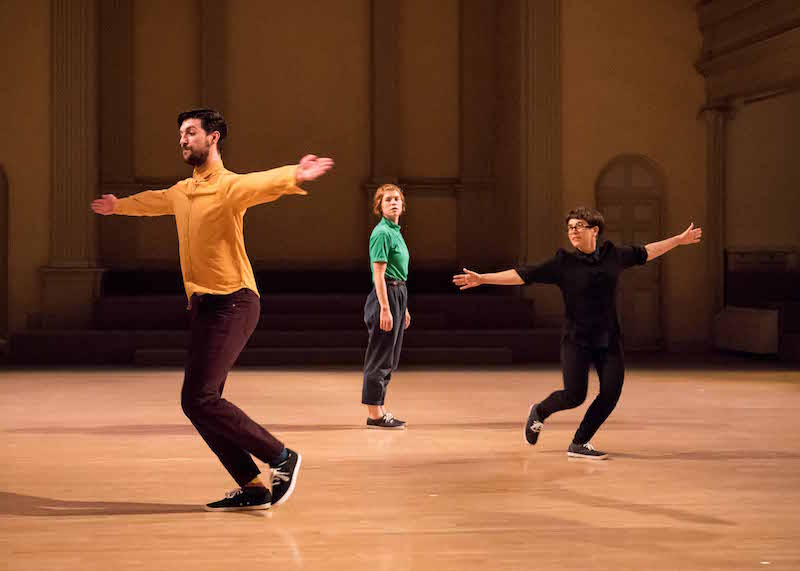
Midway through, one dancer breaks off from the group to do an improvised-looking dance. One by one others also break into their own “solos.” Then they rejoin the group, which never wavers from its stately pace. The image is of a utopian society: community-minded, dignified, civilized, democratic, and thoroughly unpretentious. I felt as though I were watching a corps de ballet in sneakers.
Catherine Galasso begins her new piece, notes on de groat, by speaking as three dancers — Kristopher K.Q. Pourzal, Chris DeVita, and Meg Weeks — perform excerpts from de Groat’s choreography for the landmark Robert Wilson-Philip Glass opera Einstein on the Beach. For those of us who’ve seen Einstein and thought its choreography to be by Lucinda Childs, Galasso corrects the historical record: De Groat devised the dances for Einstein’s 1976 Avignon Festival premiere. His choreography was later “erased” from Einstein because, Galasso implies, Wilson and de Groat parted ways in their personal lives shortly thereafter.
Also in notes, the dancers perform Galasso’s own choreography, to excerpts from a score called Stabat, also by her father, that de Groat used in a 1990 work of the same name. This is the gravest, most intimate dancing of the evening, fitting for the subject matter of the music: The Stabat Mater describes the sorrows of the Virgin Mary. Notes ends with a more-upbeat discussion, and demonstration, of de Groat’s signature spinning, which, we learn, was inspired by trips to Iran in the 1970s.
Still, the overall tone of notes on de groat is one of loss, as Galasso describes her frustration with “the impossibility” of dance preservation. And in showing us the original Einstein choreography, she implicitly makes the point that not all significant choreography has been lost because of the evanescence of the art form and the inevitable dimming of the performers’ and choreographers’ memories, but because of something more pernicious: “erasure” from the historical record. I left the theater at once exhilarated to have seen these marvelous works but also saddened to think what their fate might have been without the efforts of Galasso to restore them to their rightful place onstage.
Share Your Audience Review. Your Words Are Valuable to Dance.
Are you going to see this show, or have you seen it? Share "your" review here on The Dance Enthusiast. Your words are valuable. They help artists, educate audiences, and support the dance field in general. There is no need to be a professional critic. Just click through to our Audience Review Section and you will have the option to write free-form, or answer our helpful Enthusiast Review Questionnaire, or if you feel creative, even write a haiku review. So join the conversation.




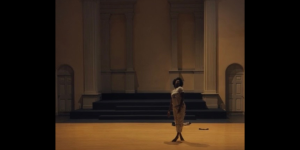
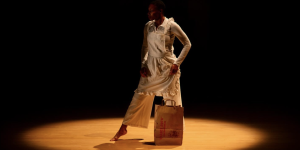

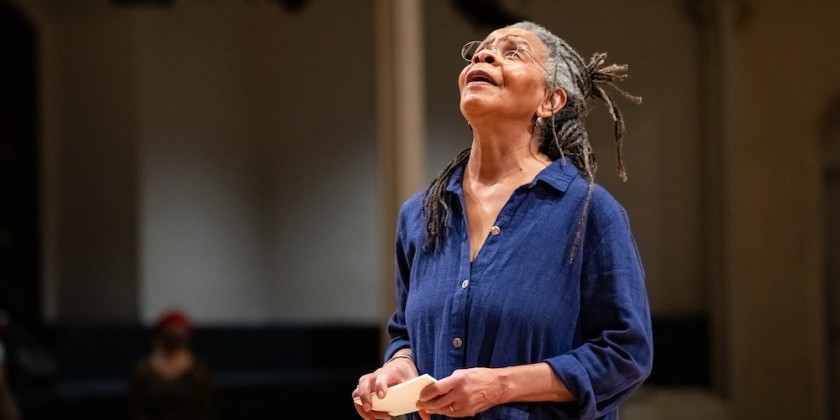
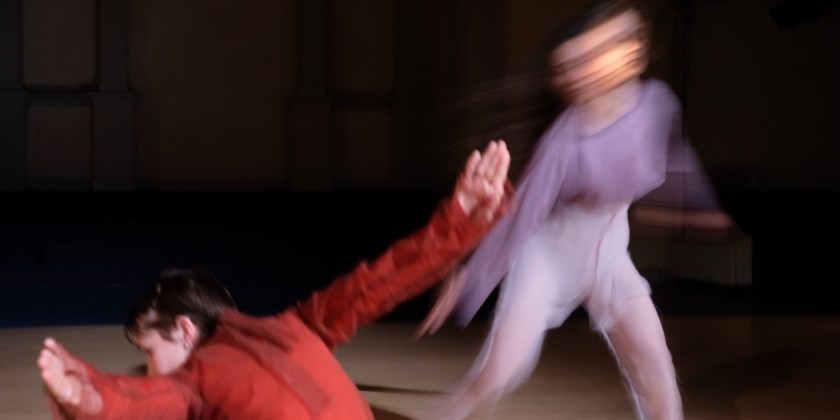
![IMPRESSIONS: Will Rawls' “[siccer]” at the Keith Haring Theatre at Performance Space New York](/images/features_large/20251119_WillRawls_siccer_PerformanceSpaceNY_WhitneyBrowne--55.jpg)
